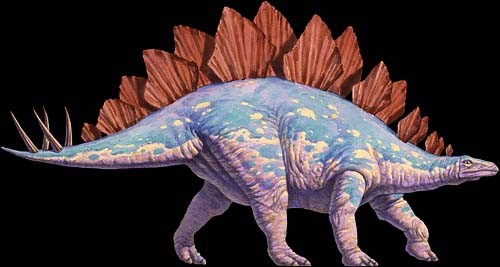Size and shape mattered to dinosaurs. A new study reveals that the sex of the Stegosaurus was based on its armor. The large, round spiky plates of the males impressed females like today's bull horns do.
Stegosaurus lived about 150 million years ago during the Late Jurassic era, and is one of the most famous gigantic herbivore dinosaurs. It had a small head and stubby legs.
The Stegosaur's body featured a double-layered set of staggered plates that ran like a Mohawk hairstyle from its neck to its tail. The plates probably protected the dinosaur from huge predators.
Protective spikes were located at the tip of the tail. However, researchers have observed an odd range of variety in both the plates' sizes and shapes.
A group of Stegosaurus mjosi fossils have been uncovered in Montana. Some of the creatures' plates were huge, wide, and round; while others were tall and somewhat thin, according to Live Science.
One potential issue when examining fossils of extinct dinosaurs is that they can appear different based on factors such as gender, age, and genes. So scientists were unsure about the purpose of the different spikes.
Evan Thomas Saitta of the United Kingdom's University of Bristol examined 40 Stegosaurus plates located at the Montana site, according to Los Angeles Times. After evaluating the sizes and shapes of the dinosaurs' spikes, he concluded that the two genders within the same species had shapes that were majorly different.
Saitta's theory is that the male Stegosaurus' large, rounded plates were used to impress females. Meanwhile, the females developed thinner, more angled plates.
Saitta explains that the males' plates seem to be "display-oriented." He compares the spikes to the horns on bulls or the antlers on bucks, although the male Stegosaurus' plates were for show rather than competition.
The plates probably developed by sexual selection. Saitta compares them to a "billboard."
The researchers' findings could change how paleontologists examine the fossils of other dinosaur species. For example, they might have wrongly thought that certain features of the Tricerotops were from young animals.
The results of the scientists were published Wednesday in the journal PLOS One.



























